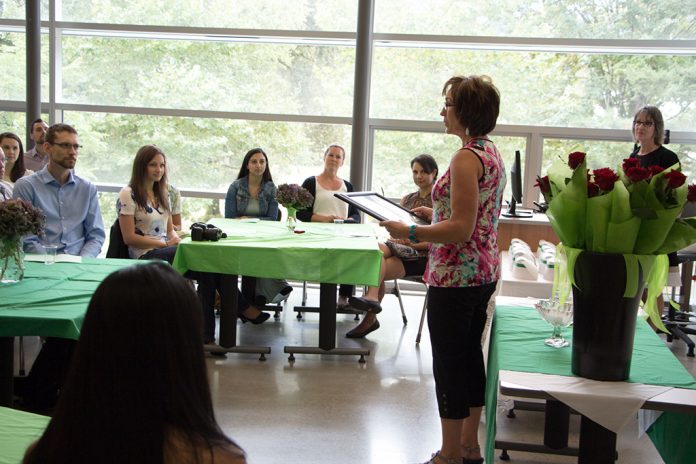Larissa Horne, appointed to the new position of experiential learning coordinator, sees tremendous opportunity and potential in UFV’s commitments to increase experiential learning.
As an experienced member of the history department since 2004, Horne has experimented with a number of experiential learning opportunities with her students in various forms and now looks to coordinate the experiential learning initiatives for UFV as a whole.
Experiential learning, generally speaking, is a hands-on, interactive approach to learning that may take place in a wide variety of locations. Often moving outside of the classroom, much of the opportunities are provided within museums, laboratories, and even other countries, depending on the discipline.
“It’s a type of learning where an applied component is involved,” said Horne. “For some, it’s not their cup of tea to sit through a long lecture. For this type of learner this is an exciting way to learn.”
Frequently, the learning opportunity will begin in a place to learn material then require students to go out and experience the application of the knowledge in real-world activities such as studying abroad, community involvement, or special projects designed with local or national interests in mind. Students would bring their experiences back to the classroom to follow through with assessments on what they learned and how to process that information.
As universities focus more on a learner-centered approach to instructing, they will naturally become less hierarchical in their teaching format.
“We’re moving away from the system where there’s an instructor coming into the classroom, lecturing, and leaving,” said Horne. “One of my goals in this mandate is to encourage faculty to create more interdisciplinary experiences.”
Often employers hiring university graduates are looking for certain transferrable skill sets which are not typically attained inside the traditional classroom. Although the classroom environment has its place in much of academia, for many students, employability is a high priority.
Beyond employability, part of the experiential learning opportunities is to encourage an environment of interdisciplinary experiences. A diversity in study creates a more rounded student and potentially one day a “citizen of the world.”
“I think this is where the future is, because we are moving away from prescribed learning environments and hierarchical environments,” said Horne, speaking about the influence experiential learning and multi-disciplinary teaching has had on her students. “I’ve seen it first-hand how my students who I’ve taken to Europe have undergone tremendous personal growth.”
“Students told us when we were coming up with our educational strategic plan, they want close interaction with faculty,” Larissa said, expanding on the 2016-20 UFV education plan. “Students are now very much our partners in learning; we appreciate their feedback and want to adjust to their learning needs.”
Experiential learning is not an uncommon concept at UFV. Many faculty members already conduct classes centered around and focused on learning opportunities requiring students to get involved with their communities by engaging and adding value through various projects. Aware of the programs already in place, Horne plans to create a comprehensive inventory of what’s already available while encouraging other instructors to be more involved though experiential learning opportunities.
“The office of experiential learning coordinator is new, but the idea is not. A lot of our faculty and support services are doing this work and making it available to students and we intend to do more,” said Horne.
Funded by the new-for-fall 2016 experiential learning and wellness fee that all students pay, the experiential learning opportunities will hopefully be beneficial for all students attending UFV.
“Our goal is to deliver the most value to the students. Through this model we will be putting together more effective ways to build experiential opportunities for students, and ensuring their accessibility,” said Horne.


